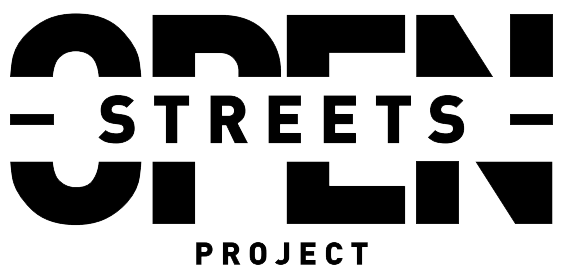Introduction
Your route is selected, your dates are set, your funding is secured and your permits are submitted…now you just need to get the word out! We have seen Open Streets programs take anywhere from one month to two years to put together. It can depend on many factors. It is important to note, however, that more time is not always a good thing. It can lead to unnecessary frills and expenses.
While there are many important factors involved in delivering a successful Open Streets program, it is important to remember these two rules:
- You need a safe and secure route
- You need people on it
Keeping these in mind throughout your planning process will help you prioritize your actions. Would it be nice to organize a giant flash-mob with your volunteers? Yes, that would be cool. Have you issued a press release yet or setup a webpage? No? Okay, get on that. Hold on the flash-mob.
To help you in rolling out your Open Streets program we have provided the following helpful tips related to marketing and promotion

Idea Stage
Identify supporters and challengers. Begin connecting with people, pitch your basic idea and getting a sense of the appetite for the program.

Planning Stage
Get the program on the radar of your local media, stakeholders and elected officials.
Must Do:
- Develop a cohesive message with your team.
Nice To Do:
- Develop a website, webpage or even a facebook page where you will provide basic information about your proposal/plan.
- Consider setting up social media accounts to provide general information about Open Streets and your proposal/plan. Start getting people excited and supportive.
- Consider issuing a press release regarding your plans or generate some earned media

Implementation Stage
Your plan is going ahead. You can now make your program public. PROMOTE, PROMOTE, PROMOTE. INFORM, INFORM, INFORM.
Must Do:
- Make sure your team is on point with key messages.
- Identify the media contacts on your team.
- Develop promotional materials
- Make sure your website/web-page/facebook page has basic, up-to-date information about the program.
- Get on social media!
- Plan your press releases.
- Set up public meeting(s) to connect directly with people and answer questions.
- Check with your local authorities about regulations regarding notices for residents and businesses affected by the road closure. Prepare your notices and plan to send them out a few weeks prior to the week of your event at a minimum. It’s easy to miss or forget a notice.
- Organize a volunteer team to distribute print information and posters.
- Ask businesses along the route to promote the program. Use public bulletin boards to display posters.
Nice To Do:
- If you can, make a 30 second video that you can use to promote your program through social media, on your website, etc.
- If you have the money, implement an ad campaign. Radio ads are often affordable, effective choices.
Examples:

Day of Open Streets
Yes! Open Streets is finally here! Now get out there and let other people see your success.
Must Do:
- Identify and prepare media contacts for interviews.
- Identify a media gathering point and time. Combine this with something that will generate a positive story.
- Have someone dedicated to connecting with people on social media, posting photos, re-tweeting etc.
- Make sure you have someone recording the day. Identify or hire someone to take photos and videos.
Nice To Do:
- Consider hosting a press conference—plan this carefully and be aware of the optics—during the early hours, the road may not be full (yet!).
- Seek out and take advantage of attractive photo ops for media and supporters!

Basic Promotional Materials
Your traditional flyers and posters will be the workhorses of your promotional materials until your budget is large enough to afford radio or TV ads. Here are some helpful tips and examples to review when creating your own:
Must Have
- Key Messages
- General Information One-pagers
- Business specific one-pager
- Notice to affected residents
- Poster
- Press-release
Nice To Have
- Video
- SWAG to hand out to volunteers, media, public etc.
Examples:
- CicLAvia’s Opportunities for Business Information Sheet
- Open Streets TO’s One Page Information Sheet
- Double sided doorhanger for Open Streets Minneapolis
- Cleveland’s Walk+Roll Map
In the early years of your program, marketing is key. You need to focus time and energy on getting the word out–but that doesn’t mean it has to break the bank. Some of the most effective marketing tools are low-cost, like social media, grassroots networking, earned media, and partnerships with radio stations or newspapers. Focus on getting the best bang for your buck. Keep in mind that if you are working towards a best practice Open Streets program–one that happens with predictable regularity–your marketing efforts and related costs will decrease as participants, residents, and businesses begin to see your program as part of their city and build it into their routine.

Working With the Media
The media can play a big role in promoting your program and can help you frame the conversation around what Open Streets are and why your city needs them. Here the most common questions you’ll be asked and some tips to help you frame your responses.
What are Open Streets?
- Open Streets are programs that temporarily open streets to people and close them to cars. People traffic replaces car traffic and the streets become ‘paved parks’, where people of all ages, abilities, and backgrounds can come out and improve their health.
Why does your city need Open Streets?
- Nearly XX% of people in our city are not physically active and this percentage is steadily increasing.
- We need to encourage new ways for our citizens to get active.
Why close the streets if we have so many parks?
- Many people do not live close enough to a park. Our existing parks, services, and programs are not enough. We need new strategies to encourage physical activity.
- Open Streets is about the street. It’s about experiencing the street from a new vantage point, showing people that they can get around the city by foot or bike.
- As Open Streets are on the street, they are also very accessible to people with mobility devises and challenges because the surface is flat and smooth.
- We need to use our existing assets to their greatest potential. We can get so much more from our streets!
Why does it have to be a main road?
- The most successful Open Streets are on iconic streets—that’s where people want to be.
- We want to showcase our city!
- There are alternative routes available for vehicles <list alternative routes>
Won’t this just make our already bad gridlock worse?
- We recognize there is a gridlock problem and we know that to solve this we need to get more people out of their cars walking, biking, and using public transit. Open Streets have been a proven tool to encourage these sustainable modes of transportation.
- We have designed the program to minimize traffic disruptions (.ie. Sunday morning, low traffic, soft closure).
What about church access? Little old ladies?
- Explain transit options.
- We have/will map out all the entrances along the route and will work with the <insert names of churches> to determine the best alternative.
- We will be providing plenty of notice
- We will make special considerations when necessary.
How can Open Streets have a positive impact on businesses if cars can’t get to them?
- Los Angeles example: 57% increase in sales for stores that engaged participants in the program in any way.
Who is paying for it? How much does it cost?
- List who is paying for it
- Say how much it costs, or tell them that you are still working on the details of the budget
- We are very grateful for their generous sponsorships and donations and for ensuring that we can run a professional and successful pilot program.
Do you want the city to pay for it?
- There are many successful funding models for Open Streets programs.
- We certainly hope that we can prove our success this year and grow the program in the future in collaboration with the city.
- These programs have proven to have strong cost-benefit ratios. For every dollar invested in the San Francisco program, they saw a 2.3 dollars in health care savings (net savings of 4 millon per year).
Do you have support from the city? XX says he/she doesn’t support the program. How do you respond to that?
- We have very positive support from many stakeholders affected by the Open Streets program and beyond.
- We have been working closely with <list stakeholders> to ensure that we create a program that the City supports and can be proud of.
XX is opposed to the idea. What are your comments?
- The Open Streets concept is supported around the world. In world class cities like New York and
- L.A., the programs have been strongly supported by the Mayors and have been hugely popular and successful. We’re committed to creating a high-quality program and we look forward to continuing to collaborate with the City and other stakeholders on this project.
How many people are you expecting?
- The most successful programs in the world draw hundreds of thousands of people. In Guadalajara, Mexico they consistently get more than 400,000 participants every single Sunday of the year. In Los Angeles, they are getting crowds larger than 150,000—we hope Open Streets <insert name of your city> can become a world class program like theirs’.
- We expect <an approximate number> of people, weather dependent.




Tips for Social Media
The use of social media is an integral part of developing an audience for your open streets program. Social media can…
This section has introductions on how to build different social media platforms as well as tips on how to make the most of each of them. The Open Streets Project is happy to help with evaluating your use of social media, developing content, or teaching you how to use specific platforms or websites mentioned in this toolkit, please just ask!
Twitter
Facebook
Instagram and Pinterest
These are valuable and popular social media platforms. However, you must first decide on where you intend to drive traffic. Do you have a dedicated webpage where the photos you pin will live? Do you have somebody on your team who will be out in the community taking photos on a regular basis? If not, these platforms might not necessarily be worth your effort at this time.
Content